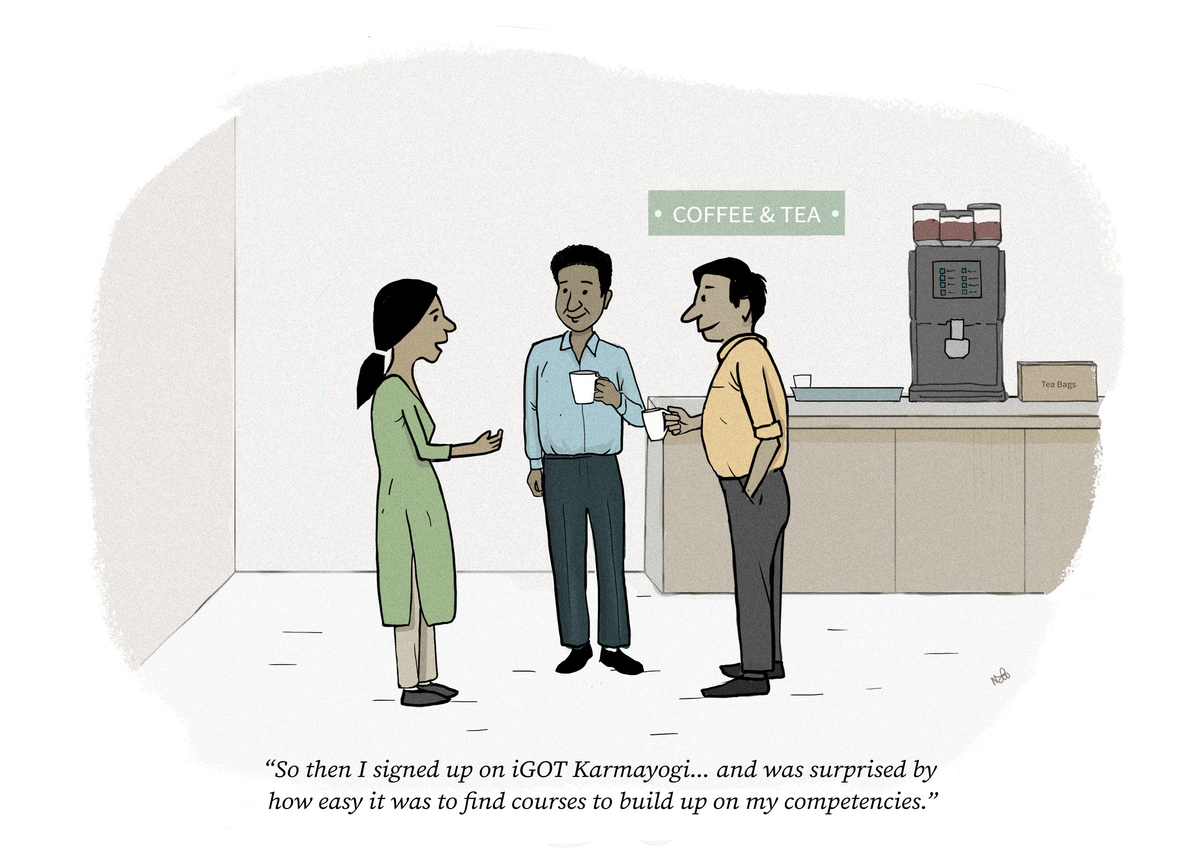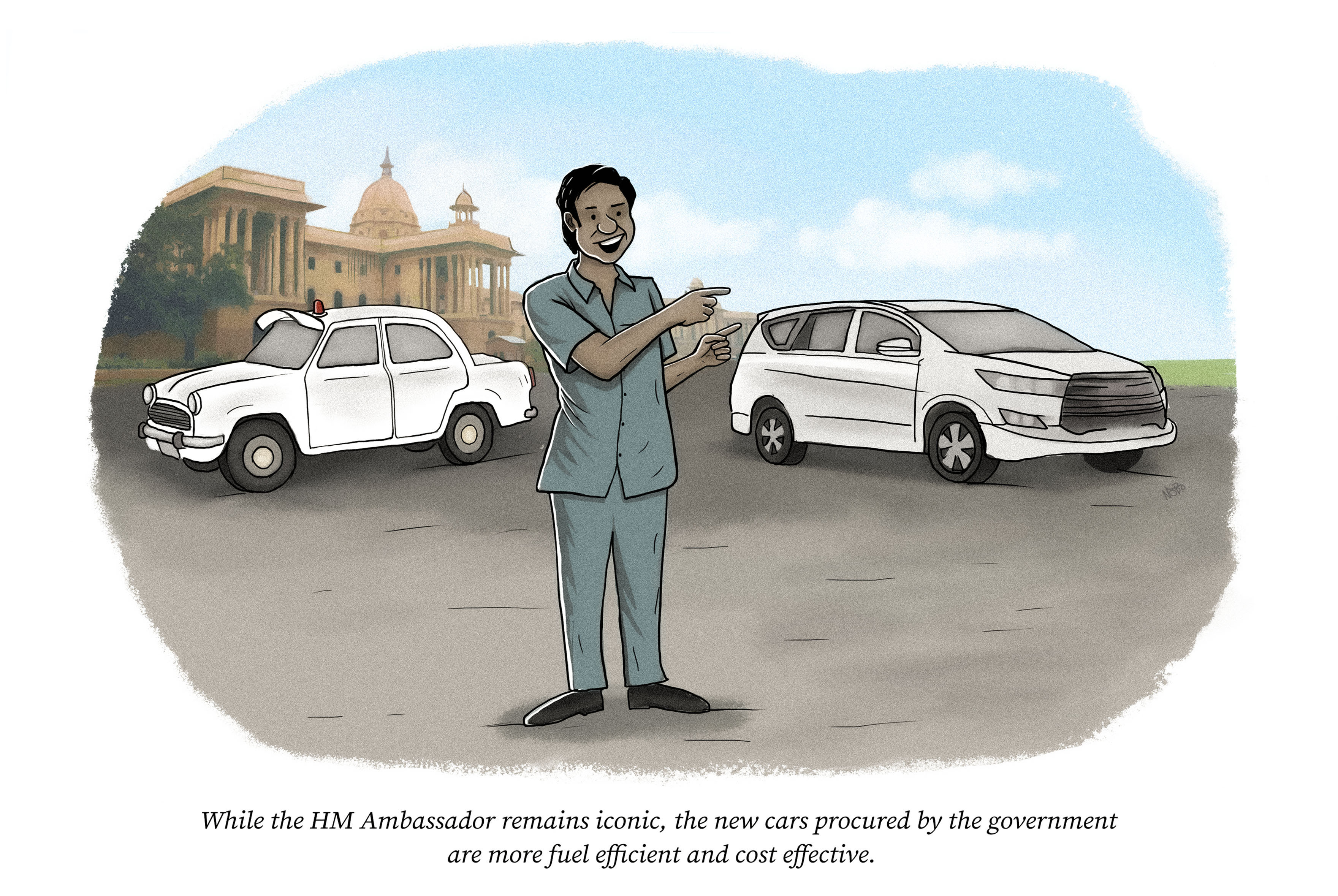Is technology the answer to streamlining public procurement in India?
For decades, the ubiquitous white Ambassador with its red beacon signalled a government in motion. In 2014, production of the iconic car was discontinued for want of more modern, fuel efficient and cost effective options. The Indian government replaced these state-owned vehicles with cars owned and operated by vendors, for all eligible public officials.
How was this done?
Through public procurement.
Public procurement is defined as the purchase of goods, services and works by governments and state-owned enterprises with the aim of improving the delivery of everyday services to citizens. These services span from building roads and electricity grids, to purchasing medical equipment and securing waste collection services. As citizens, our interactions with everyday spaces like roads, public transport, housing, healthcare and education are made possible through a well defined process of procurement.
Snapshot of Success:
- As of July 2021, GeM has 2,300,830 Sellers & Service Providers out of which 710,755 are MSE Sellers & service providers.
- Procurement through GeM has resulted in a 10% savings in public procurement costs in five years.
- In April 2020, the platform added 146 categories of medical products and 8 services categories on its platform to help the government fight COVID-19 pandemic.
- In March 2020, GeM won the Hindu Business Line Changemaker Award for Digital Transformation.
- In 2016 it was awarded the South Asia Procurement Innovation Award by the World Bank.
Each year India spends Rs. 20 lakh crore on the procurement of such services, goods and works. Despite this staggering amount, comprising nearly 20-22% of the country’s GDP, the process has struggled with challenges of decentralised procurement. With each state following its own process and advertising separate tenders for goods or services that are often required by all government agencies there is not only a loss in efficiency but also in costs. In purchasing both commonly used as well as specialised items in small quantities, the process of procurement loses the benefit of economies of scale and falls prey to malpractices owing to a lack of monitoring. To streamline this process and enable greater transparency, the Government of India launched the Government e-Marketplace (GeM) portal in 2016.
As an e-procurement portal, GeM uses digital technology to enable a more efficient and transparent exchange of information, and transactions between the government and suppliers of goods and services. GeM offers a wide spectrum of goods and services ranging from paper to procuring desks for public schools, from repairing sewage lines to building metro rails. The platform has also helped standardise and bring consistency in procurement. This in turn, has accelerated the process and eliminated redundancies resulting in savings of not only time but also costs for the government. For suppliers this process has eliminated intermediaries and guaranteed prompt release of payment thereby removing roadblocks that otherwise deterred them from working with governments.
While the platform caters to a variety of suppliers there is a special focus to encourage more participation from medium, small and micro enterprises (MSME). Between June 2020 and 2021 the number of MSME sellers on the portal grew from 3.87 lakh to 19.17 lakh, totalling 56% orders on the platform.
Procurement for Capacity Building
In the age of Digital India, this nature of procurement is not limited to acquiring only tangible products and services. The launch of Mission Karmayogi in 2020 introduced a new form of procurement, with a goal of building capacity and competencies of 20 million public officials. The hallmark of this initiative is the iGOT Karmayogi platform, a 21st century solutioning space designed to elevate learning, networking, discussions and events among public officials. And procurement lies at the centre of the platform's Learning hub. For learners who sign up, courses, workshops and training resources on the platform will be procured from various sources like MOOCs platforms, central and state training institutes, learning portals, renowned Indian and global universities and retired government officials. The challenge however lies in the seamless and timely onboarding of these learning resources.
Future of Learning:
- Over the next 12 months, iGOT Karmayogi is expected to host nearly 3,000 courses or competency building products (CBPs).
- These CBPs will be acquired from central and state training institutes, world class universities, MOOCs, and retired civil service officials.
- Initially the CBPs will cater to 84 functional and 25 behavioural competencies. The former includes artificial intelligence application, sustainability management, design thinking practice while behavioural competencies include organisational awareness, attention to detail, empathy.
To make onboarding more efficient, iGOT Karmayogi enables an easy online registration process by which providers of competency building products (CBPs) can advertise their products and services so resources are already available when demand arises. The platform boasts of many sophisticated features like:
- The procurement process for CBPs on iGOT Karmayogi is end-to-end, from orders to payments to delivery that ensures better transparency and higher efficiency.
- The platform allows CBP providers to offer their products at multiple price points, giving learners the choice to pick the courses best suited to their needs.
- Learners can also view CBPs related to a particular competency, as well as compare their key attributes like price, impact scores, content quality scores, user ratings and reviews to make an informed decision.
- Since the potential user base is expected to grow, the government can eventually negotiate with CBP providers for a price lower, taking advantage of economies of scale.
For the providers of these CBPs the platform offers substantial advantages as well. Analytics from the platform can help them gauge the uptake of their courses, the time learners take to complete them, completion and drop out rates and so on. Based on this data providers can understand trends and tweak their course content, duration and price.

Thus, this transition to e-procurement is in line with Digital India’s emphasis on e-governance and to make different sections of society digitally empowered. In the long run, platforms like GeM and iGOT Karmayogi have the potential to improve ease of doing business and rebuild trust between the government and its suppliers.



Add new comment